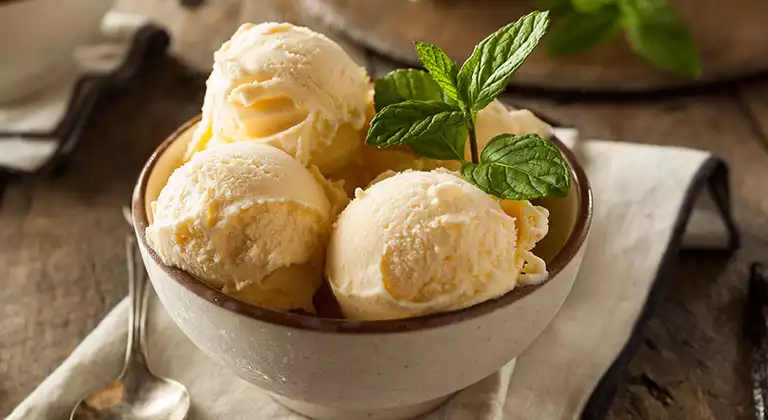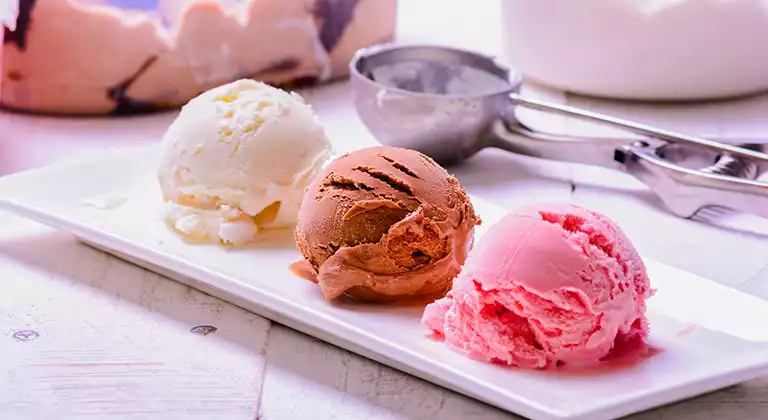Ice cream is made from whipped milk, sugar and other flavors below the freezing point. A large amount of air is evenly distributed in the ice cream. The spaces between the air bubbles are filled with tiny ice crystals, sugar crystals, fat globules, proteins and liquid. It is a complex mixture of solid, liquid and air.

The edible gelatin has hydrophilic and hydrophobic groups that reduce the milk surface tension to create more bubbles during mechanical whisking. These bubbles can double the ice cream volume approximately. Fat emulsified by gelatin becomes small droplets that are evenly dispersed in the liquid. The charged thin film on the surface of fat and air bubbles prevents them from agglomerating into larger lumps. It also raises the viscosity of mixture, and fats, bubbles and proteins are more easily bound together. These help to deliver a fluffy and creamy texture.

The three-dimensional gelatin network and the porous structure caused by bubbles will restrict the free movement of water molecules and slow down the growth of ice crystals which are small with a diameter of about 30μm. They also hold back sugar crystals growth. The larger ice and sugar crystals result in a coarse and unacceptable taste. At the same time, some water cannot freeze in gelatin network, and gives the ice cream a soft and pleasant taste.
To melt the ice cream, it has to get away from the resistance of hydrogen bonds in gelatin network and the abundant air bubbles also block heat transfer, so it increases the heat stability of ice cream. The gelatin added in ice cream is about 0.3~1% generally and the lower gelling strength,the greater amount.